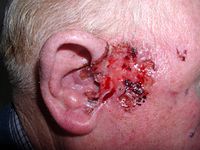
An integrated analysis of genes and functional pathways for aggression in human and rodent models
Sign Up to like & getrecommendations! Published in 2018 at "Molecular Psychiatry"
DOI: 10.1038/s41380-018-0068-7
Abstract: Human genome-wide association studies (GWAS), transcriptome analyses of animal models, and candidate gene studies have advanced our understanding of the genetic architecture of aggressive behaviors. However, each of these methods presents unique limitations. To generate… read more here.
Keywords: analysis genes; human rodent; rodent models; aggression ... See more keywords

Diverse susceptibilities and responses of human and rodent cells to orthohantavirus infection reveal different levels of cellular restriction
Sign Up to like & getrecommendations! Published in 2022 at "PLOS Neglected Tropical Diseases"
DOI: 10.1371/journal.pntd.0010844
Abstract: Orthohantaviruses are rodent-borne emerging viruses that may cause severe diseases in humans but no apparent pathology in their small mammal reservoirs. However, the mechanisms leading to tolerance or pathogenicity in humans and persistence in rodent… read more here.
Keywords: cell; rodent; different levels; human rodent ... See more keywords

Maternal immune activation as an epidemiological risk factor for neurodevelopmental disorders: Considerations of timing, severity, individual differences, and sex in human and rodent studies
Sign Up to like & getrecommendations! Published in 2023 at "Frontiers in Neuroscience"
DOI: 10.3389/fnins.2023.1135559
Abstract: Epidemiological evidence suggests that one’s risk of being diagnosed with a neurodevelopmental disorder (NDD)—such as autism, ADHD, or schizophrenia—increases significantly if their mother had a viral or bacterial infection during the first or second trimester… read more here.
Keywords: maternal immune; risk; human rodent; immune activation ... See more keywords

Fatty Acid Profiles of Leishmania major Derived from Human and Rodent Hosts in Endemic Cutaneous Leishmaniasis Areas of Tunisia and Algeria
Sign Up to like & getrecommendations! Published in 2022 at "Pathogens"
DOI: 10.3390/pathogens11010092
Abstract: Leishmaniasis is a protozoal vector-borne disease that affects both humans and animals. In the Mediterranean Basin, the primary reservoir hosts of Leishmania spp. are mainly rodents and canids. Lipidomic approaches have allowed scientists to establish… read more here.
Keywords: acid profiles; human rodent; derived human; major derived ... See more keywords